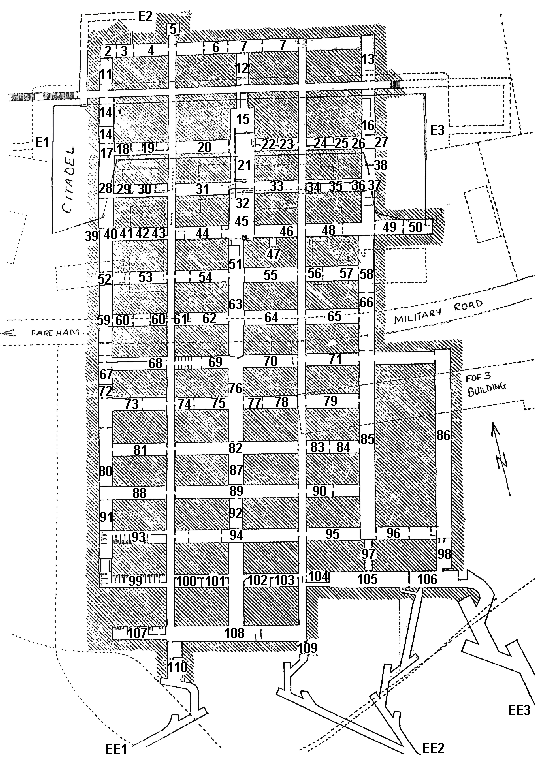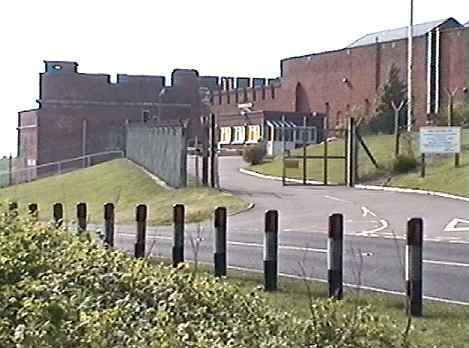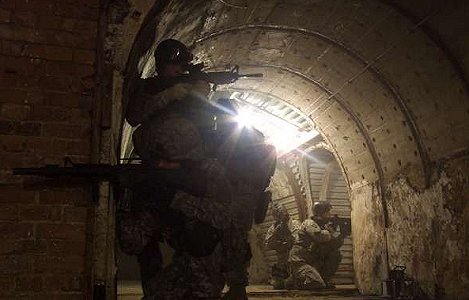|
During WWII an Underground Headquarters - UGHQ (for operation Overlord) was built beneath Fort Southwick. This provided a bombproof, comprehensive
Naval, Army and Air Force Operation Control and Communication Centre -
call sign 'MIN'. The headquarters’ main role on D-Day was gathering information and
coordinating the Allied naval forces. Reports from radar stations were crossed-referenced with messages from shipping to provide an accurate picture of what was
happening in the English Channel. This information was then plotted on a large
table map at the Fort, and was passed to the Allied commanders nearby at Southwick House.
On the 6 June 1944 there were 700 staff working underground.
As well as the UGHQ, over 1000 people were based above ground around the fort, at various headquarters associated with the planning for D-Day. These included the army and navy headquarters for the British/Canadian D-Day beaches, Second British Army and the Naval Commander Eastern Task Force respectively. An access ramp was built down into the
east ditch (which still exists), where many of these personnel were billeted.
From the very first conference of the Anglo-American Allies
held on the 31 December 1941 in Washington DC, the US committed itself to
prepare for landings on the European mainland. The Americans feared a
Russian collapse and began planning Operation Round-up to invade
northern France by April 1943 at the latest. However the British resisted
being hasty especially after the disastrous raid on Dieppe in August
1942. At an Anglo-American strategy conference in Quebec in August
1943 the Allies again agreed to the seaborne invasion of France, now
codenamed Operation Overlord, and the Americans insisted that a
provisional date of 1 May 1944 be set.
The underground
workings at Fort Southwick were excavated by 172 Tunnelling Company Royal Engineers. Work
was started on 16 February 1942, probably as a direct result of the
Washington Conference mentioned above, and the complex completed during December
1942. The operation tunnels were about 100 feet beneath the surface.
Additional galley facilities were provided in the
Central Caponier of Fort Southwick proper. Air conditioning and gas
filtration was installed as well
as fresh water storage. Access was via 3 notorious staircases from within Fort
Southwick - there was no lift. Because of its D-Day connection, its existence was a very closely
guarded secret, which still seems to persist even today. Southwick House located in the village of Southwick a mile
north from the Fort, was used as the headquarters for SHAEF (Supreme
Headquarters Allied Expeditionary Force) although the actual HQ, on and
for some time after D-Day, was a tent in nearby woods.
There is a lot of confusion surrounding the correct name of
the tunnel complex which I will try to either sort out or compound here.
It has variously been referred to as:
-
Combined Operations
Headquarters - COHQ
-
Combined Headquarters - CHQ
-
Underground Headquarters -
either UGHQ or UHQ.
COHQ or CHQ should refer to the
staff that manned the place, not to the actual location itself. However
the Combined
Operations part of COHQ is mis-leading because this was a separate
military entity which dealt with offensive raids against occupied Europe.
CHQ was a generic term used to describe tri-service staffing. The correct
term for the command and control centre under Fort Southwick is
Underground Headquarters which I have abbreviated to UGHQ.
As part of the Fort Southwick
UGHQ construction project,
a secure underground
radio station was also built in the Paulsgrove Chalk Pit. It was once thought that a tunnel
was also constructed linking the UGHQ to the Oil
Fuel Reservoir which lies to the west but there is no evidence of
this.
Two other back-up UGHQs were
built, in case Fort Southwick was put out of action. Some accounts state
that the primary one was under Wentworth Golf Course, but it was in fact
at HMS Forward
Newhaven. It has been suggested that some functions of the UGHQ were
duplicated at Western Heights Dover, although this may just be speculation.
Two other forts on Portsdown were also held in reserve, Forts Widley and
Purbrook, and some of the telephone poles which connected the 3 forts can
still be seen today.
The UGHQ complex was partly re-used during the Cold
War as a Communication
Centre.
In 1974 a replacement COMMCEN was constructed on the Parade
Ground.
|


